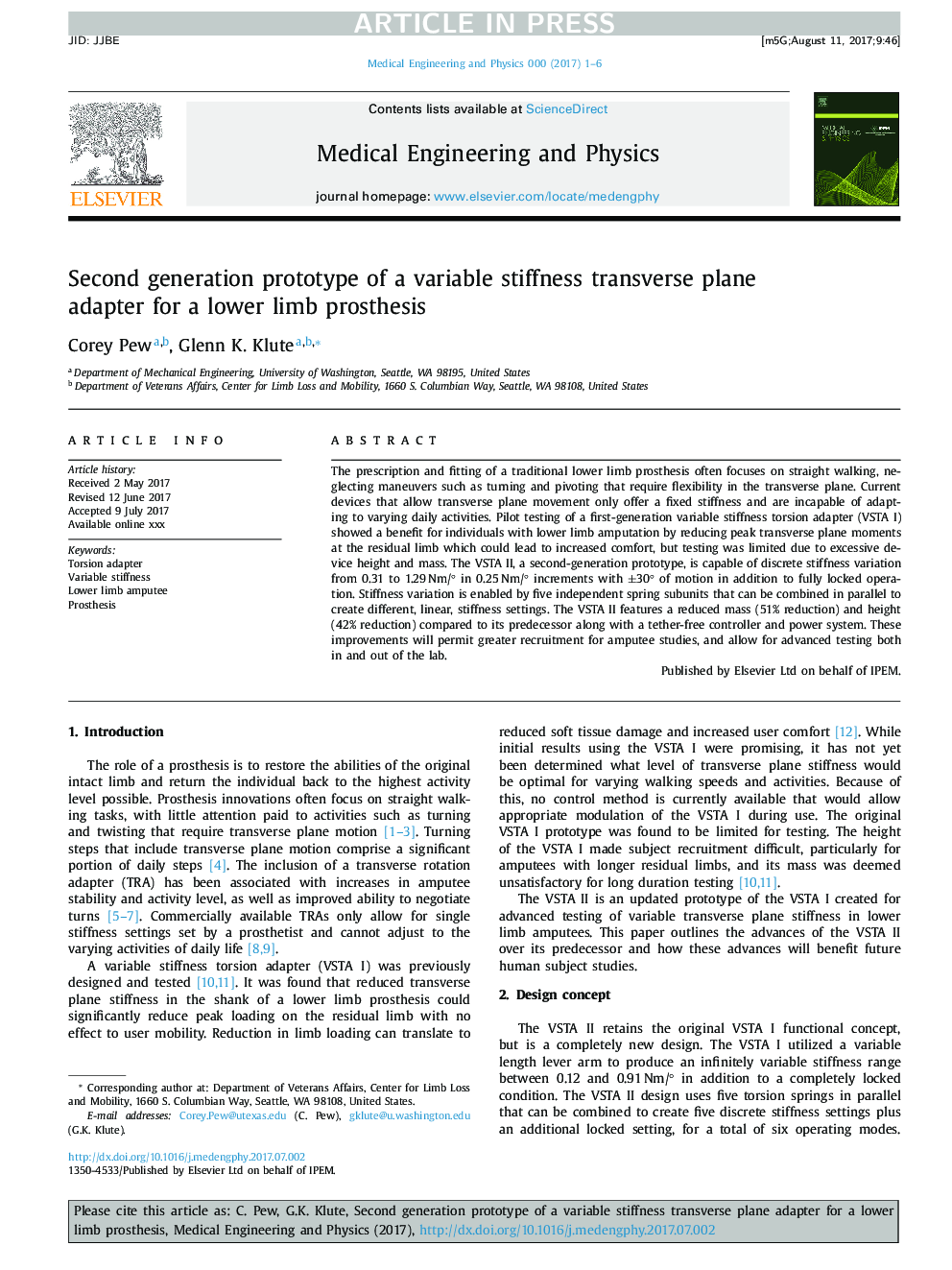| Article ID | Journal | Published Year | Pages | File Type |
|---|---|---|---|---|
| 7237658 | Medical Engineering & Physics | 2017 | 6 Pages |
Abstract
The prescription and fitting of a traditional lower limb prosthesis often focuses on straight walking, neglecting maneuvers such as turning and pivoting that require flexibility in the transverse plane. Current devices that allow transverse plane movement only offer a fixed stiffness and are incapable of adapting to varying daily activities. Pilot testing of a first-generation variable stiffness torsion adapter (VSTA I) showed a benefit for individuals with lower limb amputation by reducing peak transverse plane moments at the residual limb which could lead to increased comfort, but testing was limited due to excessive device height and mass. The VSTA II, a second-generation prototype, is capable of discrete stiffness variation from 0.31 to 1.29â¯Nm/° in 0.25â¯Nm/° increments with ±30° of motion in addition to fully locked operation. Stiffness variation is enabled by five independent spring subunits that can be combined in parallel to create different, linear, stiffness settings. The VSTA II features a reduced mass (51% reduction) and height (42% reduction) compared to its predecessor along with a tether-free controller and power system. These improvements will permit greater recruitment for amputee studies, and allow for advanced testing both in and out of the lab.
Related Topics
Physical Sciences and Engineering
Engineering
Biomedical Engineering
Authors
Corey Pew, Glenn K. Klute,
